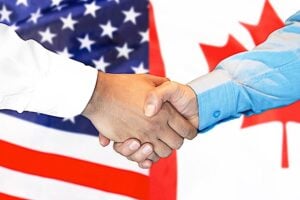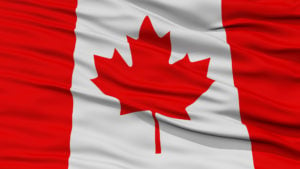Good for jobs and economy says Prime Minister: USMCA replaces NAFTA in more than just name
USMCA may be an awkward name, but it appears to be a win for Canadian jobs and the Economy, with the notable exception of the Dairy industry — and possibly the steel industry, depending on post-agreement tariff actions. Prime Minister Justin Trudeau tweeted:
“A good deal for Canada that will strengthen the middle class, grow the economy, create new jobs and more opportunities for Canadian businesses, workers, and families.”

The late-night deal, right down to President Trump’s hard deadline delivered a more current trade agreement that also took into account digital rights and downloads. While the agreement might strongly favour the U.S. — as the dominant economy in the deal — it appears to be good for Canada in most respects, except new access to the Dairy industry in Canada for the U.S. Canada maintained won on its no-budget position on the independent dispute resolution.
Critical changes in USMCA
• USMCA increases regional content to 75% from 62.5%.
• A percentage of factors must pay workers at least $16 per hour — probably good for Canada, not so good for Mexico?
• The U.S. won access to 3.5% of Canada’s Dairy market.
• Canada removed barriers to milk, cheese and other dairy products coming in from the U.S.
• Updated rules (from NAFTA) for dealing with digital and intellectual property.
• Pharmaceutical companies gain exclusive 10-year marketing rights.
• USMCA bans any duties on software, music and ebooks.
• USMCA comes up for review every six years.

Pesident Donald Trump tweeted his approval:
“Late last night, our deadline, we reached a wonderful new Trade Deal with Canada, to be added into the deal already reached with Mexico. The new name will be The United States Mexico Canada Agreement, or USMCA. It is a great deal for all three countries, solves the many deficiencies and mistakes in NAFTA, greatly opens markets to our Farmers and Manufacturers, reduces Trade Barriers to the U.S. and will bring all three Great Nations together in competition with the rest of the world. The USMCA is a historic transaction!
USMCA fully replaces NAFTA
With a hard-to-remember name — it doesn’t quite roll off the tongue like NAFTA — the United States Mexico Canada Agreement (USMCA) was a win for the auto-sector, but not necessarily for the steel industry. It was a win politically for both Prime Minister Trudeau and President Trump, who made a big show of strength. Trudeau stood to gain either way: by showing strength with his ‘line in the sand’ approach, he probably scored political points and winning a deal doubled down. The jury on the steel tariffs is still out; there’s a good chance of a sidebar reconciliation. It was a definite lose for the dairy industry, although most experts agree the three parties — mostly Canada — had to make concessions. Is it a good deal? Time will tell, but, regardless, it is good news for industries in Ontario and Canada — especially if the steel tariffs ease as a “reward” for signing.
Canada dodged the Trump bullet of 20 to 25% duties on cars and auto parts under Section 232 national security tariffs.
Stocks jump with new USMCA deal
The markets like the new deal, although any agreement would have resulted in a bump in the auto sector, after the long stand-off.
Three countries saw a rise in stocks, with the Dow rising almost 0.8% or 200 points. In later day trading, S&P and Nasdaq were mixed. Not every sector, of course, benefited from the deal:
• GM (GM) and Ford (F) both rose more than 1%
• Fiat Chrysler (FCAU) rose almost 3%
One of the reasons remains trade tension with China. David Kelley of JPMorgan explained, “While the U.S. has reached a new trade agreement with Mexico and Canada, growing trade conflict between China and the U.S. threatens economic growth in both countries.”
Quick Facts
- North America is home to more than 486 million people.
- When the North American Free Trade Agreement came into effect on January 1, 1994, it created the largest free trade region in the world at that time, generating economic growth and helping to raise the standard of living for the people of all three member countries.
- The United States and Mexico are, respectively, Canada’s first- and third-largest merchandise trading partners in the world. Canada is respectively the second- and fifth-largest merchandise trading partner of the United States and Mexico, and the largest export market for the United States.
- In 2017, trilateral trade reached nearly USD $1.1 trillion – more than a three-fold increase since 1993.
- To reach this renewed trilateral trade understanding, the Prime Minister, Ministers, Parliamentarians, federal officials, Premiers, and industry representatives directly engaged political and business leaders in the United States to advocate on behalf of Canadians.
- Since January 2016, “Team Canada” visited the United States more than 300 times, and made more than 500 individual contacts with American officials, including the President, the Vice-President, 16 United States Cabinet members, more than 310 members of Congress, and 60 governors and lieutenant governors.
- To help guide negotiations, the Government of Canada consulted with Canadians from across the country and from all sectors and backgrounds about trade. Consultations included meetings with the provinces and territories, industry, unions, civil society, think tanks, academics, Indigenous peoples, women, youth, and the general public.
Do you have questions about how USMCA might impact HR Management or recruiting in your work place? Ask us:


 Our HR solutions experts can recommend the right mix of HR outsourced services to make your entry into Canada easier.
Our HR solutions experts can recommend the right mix of HR outsourced services to make your entry into Canada easier.  Pivotal Employment Management Services co-hires your workforce, simplifying entry of your business in Canada.
Pivotal Employment Management Services co-hires your workforce, simplifying entry of your business in Canada. 















